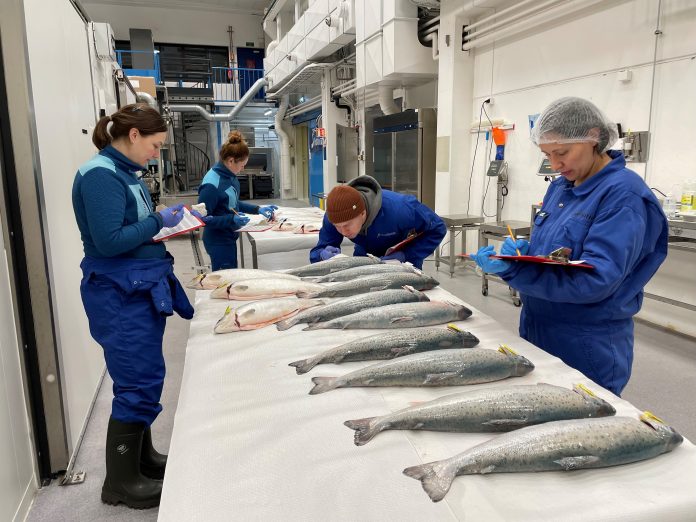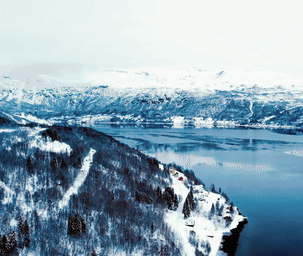Algae-fed salmon: Researchers trial high-CO₂ microalgae feed with promising results.
A collaborative research project in Northern Norway is trialling a novel salmon feed made from microalgae cultivated using CO₂ emissions from the ferrosilicon industry. Early results suggest strong potential for growth performance, fish health, and reduced sea lice levels.
The project brings together researchers from Nofima, SINTEF, and UiT – The Arctic University of Norway – in collaboration with Finnfjord AS, a ferrosilicon producer in Troms that emits approximately 300,000 tonnes of CO₂ annually. That CO₂ is now being used to grow diatoms, a type of microalgae rich in marine omega-3 fatty acids.
“We incorporate the algae into the feed and conduct growth trials with the salmon, from fry to slaughter weight,” said Sten Siikavuopio, senior scientist at Nofima. “The salmon grow well on the algae feed and are in good health.”
The research is part of the Green Platform-funded AlgOpti project, which received NOK 93.3 million in 2021 to develop CO₂-based feed ingredients. A related project, Mikro-fôr, led by SINTEF Ocean and funded by the Norwegian Seafood Research Fund (FHF), focuses on refining algae cultivation methods and evaluating microalgae’s role as a sustainable feed ingredient.
While earlier trials used just 3% algae in the feed, improved processing technology now allows inclusion rates of up to 15%. Preliminary results from Nofima’s feed trials show that salmon fed on high-algae diets exhibit normal growth, muscle quality, and health metrics. Moreover, early findings suggest a possible reduction in lice infestations.
Finnfjord AS, which operates one of the world’s most energy-efficient ferrosilicon facilities, aims to become the first CO₂-free producer in its sector. The company channels exhaust CO₂ into algae cultivation tanks developed in partnership with UiT, producing biomass that is processed into feed ingredients by partners including Nofima, Skretting, and Cargill.
Siikavuopio notes that the algae’s high levels of EPA and DHA could allow it to replace fish oil in salmon diets. “Microalgae can be a viable marine oil source. There’s real potential here to decouple feed production from pressure on wild fish resources,” he said.
Researchers from NTNU have also contributed to refining algae classification through machine learning and video analysis, supporting efforts to optimise algae species selection and feed formulation.
Further work is planned to scale production and validate results across different farming environments. Only a small fraction of the world’s microalgae species have been evaluated for feed use to date.


